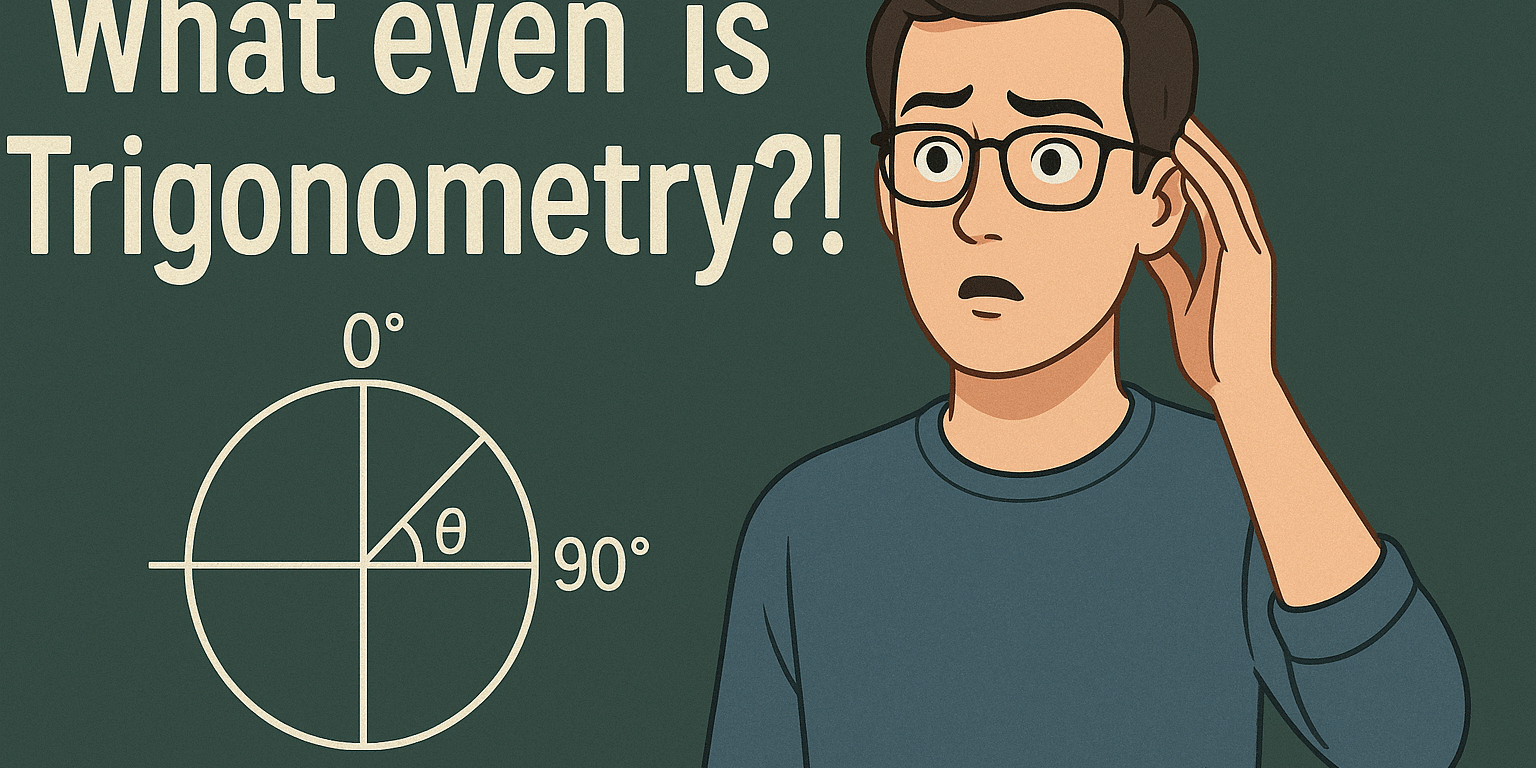The Bridge From Triangles to Circles, Waves, and Real-World Motion
You may be thinking:
Where did this subject come from? Is it any different from geometry? Does the “tri-” at the beginning mean it’s all about triangles?
You’re right that tri in trigonometry points to triangles. That’s the root of the subject. But it’s grown into more than just “triangle math.” Trigonometry is basically the study of how the sides and angles of triangles are related. It starts with right triangles and grows into powerful tools for circles, waves, and even physics.
Geometry vs. Trigonometry
You could think of it like this:
- Geometry is about shapes and space (lines, angles, circles, areas).
- Trigonometry is geometry with equations—it puts numbers to those shapes, especially triangles.
In other words: Trigonometry is the math of triangles, angles, and the patterns they create.
It’s how we go from drawing shapes to predicting motion, building bridges, or even creating 3D graphics in video games.
Why Triangles?
Triangles are special because if you know a little about them, you can figure out a lot.
- Know one side length and an angle? You can unlock the whole triangle.
- Need to measure the height of a building without climbing it? A triangle can get you there.
- Wonder how engineers design ramps, roofs, or roller coasters? Yep—triangles again.
That’s why trigonometry matters: it turns “just a shape” into a powerful problem-solving tool.
Beyond Triangles: Circles, Waves, and More
Once you’ve got the basics, trig expands into circles and waves. This is where things get exciting:
- Circles: Understanding rotations, orbits, and circular motion.
- Waves: Modeling sound, light, and vibrations.
- Real life: Music, architecture, physics, GPS navigation, and computer graphics all rely on trig.
So yes, it begins with triangles, but it doesn’t stop there—it describes patterns that show up all over the universe.
A Student-Friendly Take
Here are three quick ways to think about trig:
- “Trigonometry is just triangle math—figuring out how sides and angles connect.”
- “It’s geometry with equations: turning shapes into numbers you can actually calculate.”
- “Trig takes triangles and unlocks patterns in circles, waves, and even video games.”
Final Word
So…is trigonometry just “geometry with more math”? In a way, yes—but more precisely, it’s the bridge between shapes and equations, between drawing something and predicting how it will behave in the real world.
That’s why trig shows up everywhere from high school classrooms to rocket launches.
If you’re a student (or a parent of one) who feels lost in this world of triangles and ratios, don’t worry—you’re not alone. With the right guidance, trigonometry becomes a set of tools you can actually use, not just memorize.
👉 Want help making sense of trigonometry? Book a free call with LVMT and let’s turn those triangles into confidence.




